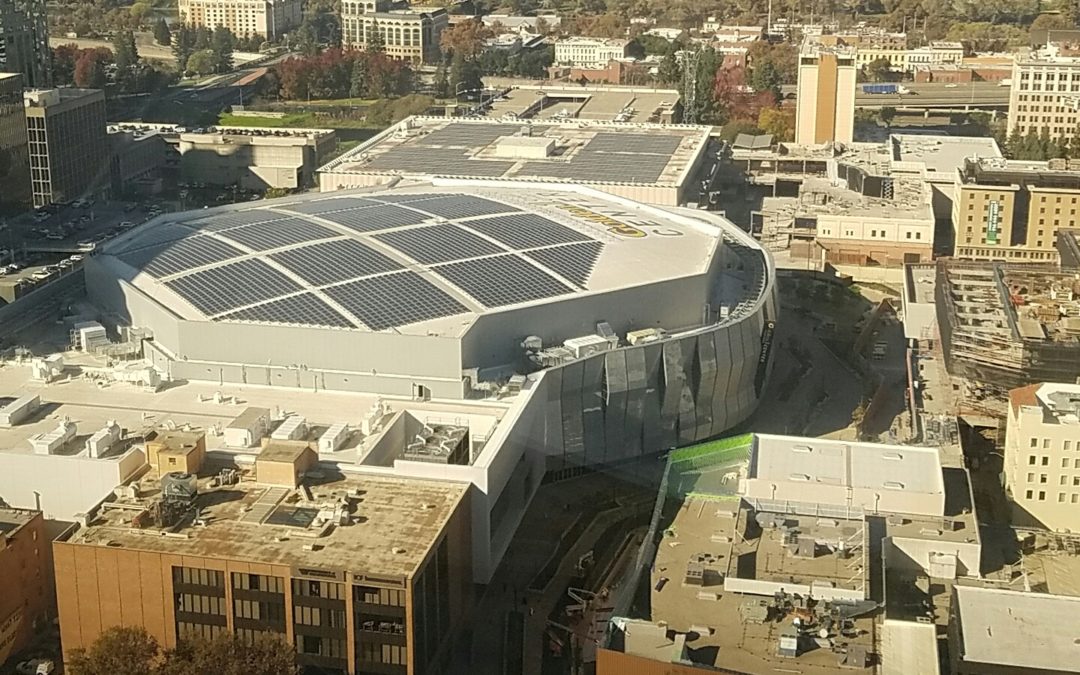


2020 Predictions
Since I went 4.5 for 10 last year I felt I needed to return to my terot cards take another shot at ten fearless predictions for the coming year. We will revisit these at the end of the year to see how we did. If you have some insights or questions, let us know at Info@cleanstart.org and we will include those in a future newsletter.
- The momentum for the “hydrogen highway” will stall out. Battery electric vehicles are proving to be superior to hydrogen fuel cell vehicles in almost every way. As a result, sales of hydrogen fuel cell vehicles are lagging expectations and hydrogen sales have grown slowly. About 152,000 battery electric and plug-in hybrids were sold in the state in 2019, compared to about 1500 fuel cell electrics. Only 8 FCEVs were sold in the last quarter of 2018 in our ten-county region. Probably fewer than 30 were sold here in all of 2019. The total registrations for FCEVs in the state stands at about 6,000 at year-end, while the total for battery and plug-in electrics is about 616,000. (Exact data as of end of 2018 are 248,332 battery electrics, 216,042 plug-in hybrids, and 5,391 FCEVs). In 2017, the Air Resources Board projected that there would be 13,400 FCEVs in 2020 and 37,400 by 2023. At one time, the goal was a million FCEVs by 2030. None of these will be even close to being realized.
A huge reason is that hydrogen fuel has turned out to be much more expensive than gasoline and particularly more costly than electricity. Currently, hydrogen is priced at about $12.50 per kg, with equivalent energy to a gallon of gasoline but with a fuel cell double the efficiency of an engine, the equivalent of gasoline is more like $6.25 per gallon. Stated another way, gasoline costs about 12 cents per mile (at $3.15 per gallon), hydrogen 25 cents, and electricity 6 cents.
This leads us to make several predictions for 2020: - Sales of FCEVs in our region will fall below 10.
- The number of hydrogen refueling stations will barely reach 50 statewide (there are 44 now, with 3 in our area). Governor Brown’s goal was 100 stations by 2020, 200 stations by 2025, and 1000 by 2030. We may never see 100 stations in California.
- The price of hydrogen locally will not fall below $10 per kilogram.
- A major auto company will announce it is dropping its FCEV production.
- The number of EV charging stations around Sacramento will exceed 1000. According to ChargeHub, there are currently 566 charging stations within 15 km of downtown Sacramento. Of these 478 are Level 2 (220 V) chargers and 88 are Level 3 (480 V, 110 A). We believe the total for this area will exceed 1000 by the end of the year with over 200 being Level 3. We may also see the first fast chargers go into existing gas stations, an interesting development in itself.
- One more independent EV company in the US will announce it is beginning manufacturing. The field is getting crowded and one might think some companies would drop out. They may, but at the same time we think there will be at least one more entrepreneur who will take the plunge. At the same time, we could see some other established car companies announce full battery electric cars this year.
- There will be at least 15 nominees for Sustainable Innovation of the Year. Stoel Rives and the Sacramento Business Journal will be conducting this contest again in 2020, the fourth year for it. It has been a good way to highlight the best and brightest in clean tech. The number of companies nominated has been an indicator of interest in sustainability and of the level of activity in the clean tech community. The first year, there were 16 nominees, but the number has trended down ever since. We believe there has been a surge in bringing innovations to market in our area and that should be reflected in the number of nominees.
- Prices for a ton of carbon emission reduction in 2020 will still not break $20. It has been rising slowly both in the prompt and futures markets, but the supply of carbon emission reductions has continued to grow, keeping a lid on prices. The most recent price for carbon allowances for 2021 cleared at $19.53, so maybe next year we will have to take a closer look.
- The installed cost of solar PV will rise modestly. We were wrong about this one last year. But with the new requirements for solar on all new homes and the continuation of the tariffs on Chinese panels, we cling to the idea that the cost will be pushed up a few cents from its current $4.50 per kW on homes.
- The revenue generated by our regional clean tech companies will top $6 billion. The last time we collected this information in late 2018, the total was $5 billion, but we see an upswell in sales success. Maybe it will result in 20% growth over two years. Wouldn’t that be nice?
- A bill will be introduced in California to extend generous subsidies to homeowners to install storage. The subsidies for PV panels are declining. There are subsidies for grid-scale storage, but not much for the homeowner. We expect there will be a move to change this, but it won’t pass. Maybe 2021.
- Two renewable-based microgrids with over 1000 customers each will be established in Northern California. The power shutoffs of last year are accelerating the interest of communities in creating sections of the grid that can be powered more reliably. Already, PG&E has trucked-in engine-generators to provide power during shutoffs, but people are demanded cleaner solutions. Some clever communities, whether as part of the CCA movement or separately, are looking at solar, wind, hydro and battery combinations to give them better reliability. Dozens if not hundreds of communities are having these discussions. There are already about 100 microgrids in the state serving a few large customers each in most cases. The question is whether this will spread to larger aggregations of customers and to the use of renewables. There are many obstacles, so getting two done in 2020 is actually a pretty aggressive prediction.
- One cleantech startup in our region will be acquired for a substantial sum. We know there are several discussions underway. Just waiting for the shoe to drop.
Make sure to follow CleanStart this year and see how I do on my predictions.
Follow us on Social Media to keep upto date!

ABOUT THE AUTHOR
Gary Simon is the Chair of CleanStarts Board. A seasoned energy executive and entrepreneur with 45 years of experience in business, government, and non-profits.
CleanStart Sponsors
Weintraub | Tobin, EY, Stoel Rives, Greenberg Traurig LLP
BlueTech Valley, Buchalter, Moss Adams, PowerSoft.biz
College of Engineering & Computer Science at Sacramento State

December 2019 Newsletter

Necessity Gives Rise to a New Company
In 2006, a solar developer had a problem. It wanted to win the bid to cover the roof of the Staples Center in Los Angeles with PV panels. But like many arenas, the roof wouldn’t bear much weight and more importantly, the owner wanted to be sure the installation wouldn’t cause any leaks. Looking at all the conventional ways to secure PV panels to the roofs of commercial buildings, the developer could not find anything suitable. Conventional systems are designed for only flat roofs and the Staples Center roof was gently curved. More importantly, typical systems used ballasting to hold down the racks of panels to avoid making holes in the roof. But then the racks can move or the ballast (usually concrete blocks) can deteriorate. With no other option, the developer turned to its own engineers to design a new lightweight installation system appropriate for the curved roof. And it worked. They won the bid. They installed the panels. And after a decade, still no leaks.
In fact, the system worked so well, they decided to make a business around it. That was the origin of Sustainable Technologies in North Natomas and its flagship product, the patented Facet Roof Mount. It looks like a small flying saucer with a threaded center section for a bolt to hold the PV racks. It’s so simple that PV installation times are slashed and costs reduced as well. It is used in conjunction with various flashing and sealing methods to ensure that it is water-tight.
It works so well, sales are zooming, with over 85,000 likely to be sold this year, up from 30,000 last year. The units themselves are outsourced to China, with sales done directly or through US distributors. No significant sales have been made outside the US, but a move into European markets is on the horizon. In our judgment, the big milestone for this company is probably getting unit sales over the 10 million mark. The 120,000+ mounts sold to date support about 10 MW of solar installations. When 1000 MW worth of mounts have been sold, the technology will be on lots of developers’ radar screens and sales should zoom.

According to Erica Lindstrom, Sales and Operations Manager, the key to getting sales is receiving approvals from the roofing manufacturers and most importantly from building standards agencies. They have certifications from most manufacturers that the use of their system does not void warranties, and are working on getting it for the most popular roofing material—EPDM or polymerized Ethylene Propylene Diene Monomer, commonly called a “rubber roof”. Building department approvals are a longer game. Every locality and state has its own rules. Erica says they just got approval from the LA city building department to unlock one of the biggest markets in the country. Awesome!

ABOUT THE AUTHOR
Gary Simon is the Chair of CleanStarts Board. A seasoned energy executive and entrepreneur with 45 years of experience in business, government, and non-profits.
CleanStart Sponsors
Weintraub | Tobin, EY, Stoel Rives, Greenberg Traurig LLP
BlueTech Valley, Buchalter, Moss Adams, PowerSoft.biz
College of Engineering & Computer Science at Sacramento State

Companies Get Excellent Advice from Top Start-Up Lawyer
Last Tuesday CleanStart held its second legal roundtable with Michelle Hallsten at GT law to support early stage startups in the Sacramento region. Companies who just started a few weeks ago, like EV Life, to ones growing in popularity like RePurpose Energy came to find answers supporting their growth. It was entirely a Q&A format with Michelle willing to offer advice on any topic the companies wanted to raise.
Popular questions centered around a few areas:
- What is the first thing a company should do when fundraising?
- What type of investors are out there and what are a company’s responsibilities to them?
- When do I need to protect my IP?
- How do I have a conversation with current equity holders, other founders, and friends and family?
- What about crowdfunded equity?
The Roundtable started at 4 pm but went past the 5:30 end time to beyond 7 as Michelle discussed all the different options startups need to consider when fundraising, growing and protecting themselves. It is important to remember that while each startup is different, needing individualized support, building a competent team with quality legal counsel pays increasing dividends over time, putting a company in an increasingly strong position. This was such a successful event, we are planning to do another session later in the year.
Make sure to follow CleanStart by signing up for our newsletter to make sure you don’t miss out on these events.
ABOUT THE AUTHOR
Thomas is the Executive Director of CleanStart. Thomas has a strong background in supporting small businesses, leadership, financial management and is proficient in working with nonprofits. He has a BS in Finance and a BA in Economics from California State University, Chico. Thomas has a passion for sustainability and a commitment to supporting non-profits in the region.
Sponsors




Weintraub | Tobin, Revrnt, Moss Adams, PowerSoft.biz, Greenberg Traurig




